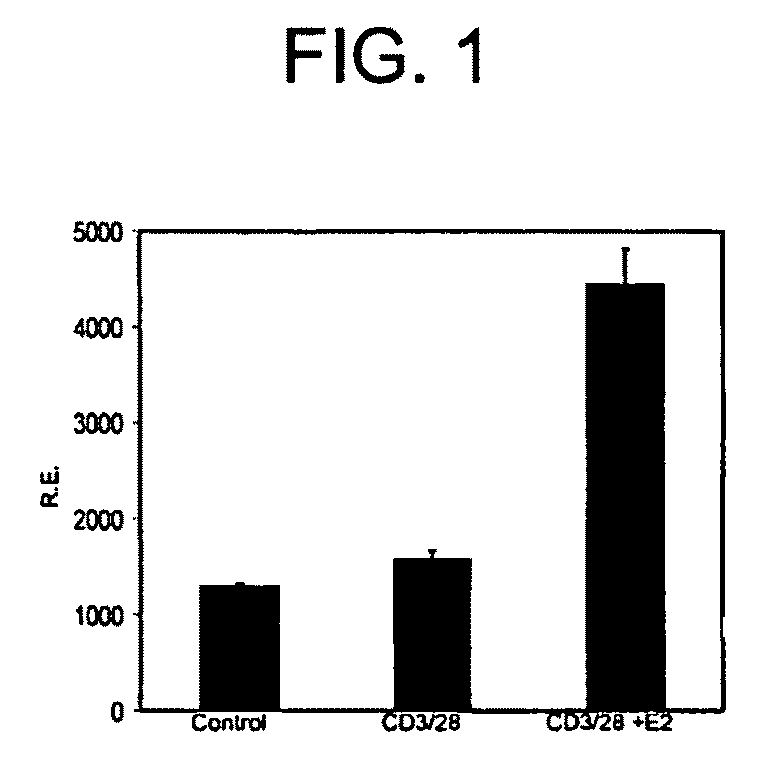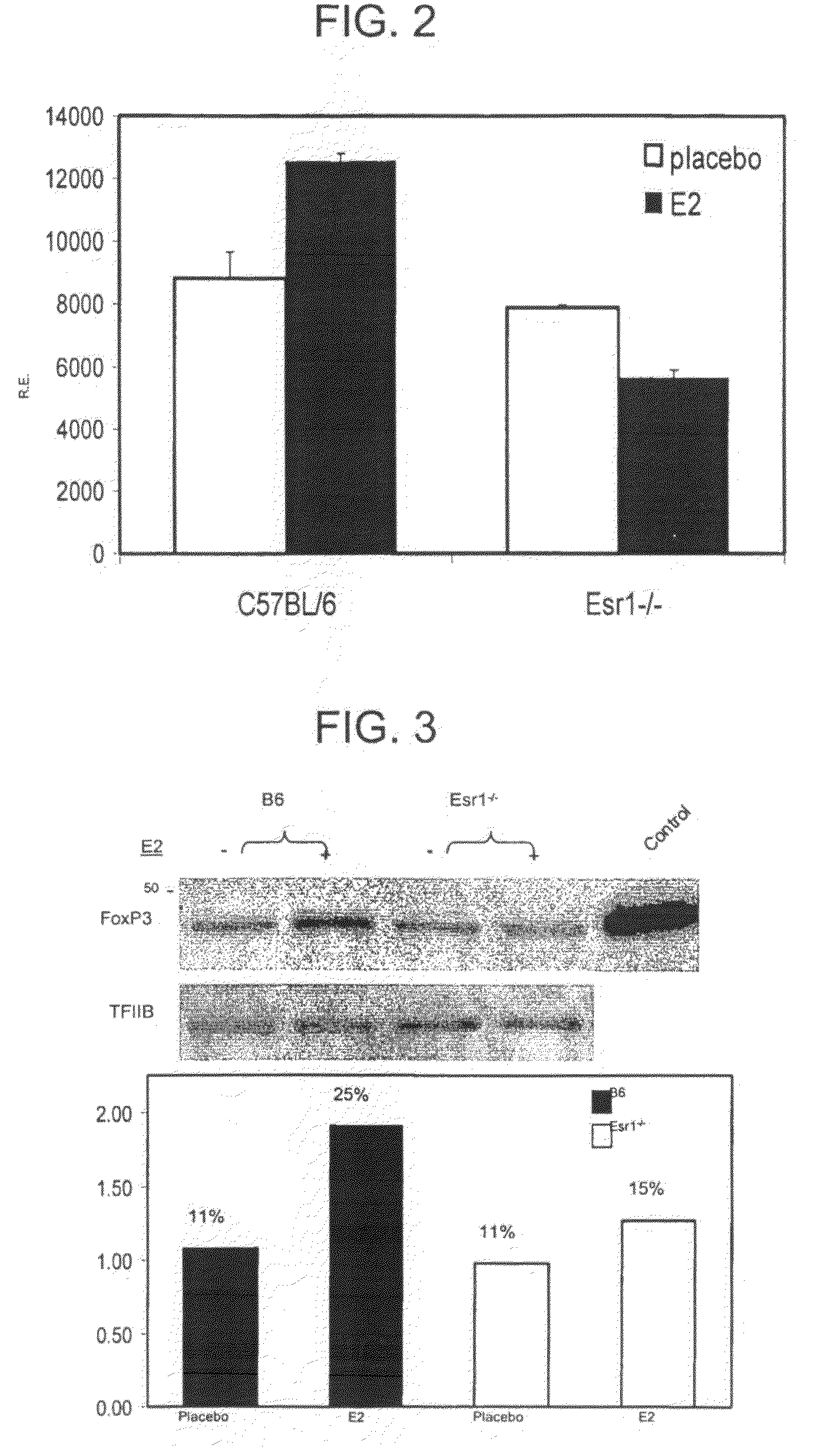Methods for detecting and treating autoimmune disorders
a technology for autoimmune disorders and autoimmune diseases, applied in the field of autoimmune disorders, can solve the problems of affecting the normal affecting the function of the immune system, and affecting the ability of the immune system to adapt to the expansion of the body, so as to inhibit the autoimmune disease and increase the expression of foxp3
- Summary
- Abstract
- Description
- Claims
- Application Information
AI Technical Summary
Benefits of technology
Problems solved by technology
Method used
Image
Examples
example 1
E2 Augments Foxp3 Expression in vitro
[0177]The capacity of E2 to induce Foxp3 expression in vitro in purified (>99%) CD4+CD25− T cells was tested. E2 in combination with TCR stimulation by anti-CD3 antibody for 24 hours induced Foxp3 mRNA approximately 3-fold over levels in untreated cells, while TCR stimulation with anti-CD3 without E2, failed to induce Foxp3 (FIG. 1). In addition, E2 increased the fraction of CD25+ cells over TCR stimulation alone, consistent with induction of Treg.
example 2
E2 Treatment Before EAE Induction Augments Foxp3 Expression In Vivo
Mice
[0178]Female naïve or syngeneic pregnant (19 days) C57BL / 6 mice were purchased from Jackson Laboratory (Bar Harbor, Me.). Estrogen receptor alpha knockout (Esrl− / −) mice were purchased from Taconic (Germantown, N.Y.). Most experiments represent cells pooled from at least five mice per experimental condition.
Hormone Treatment
[0179]For E2 therapy, a 3 mm pellet containing 2.5 mg or 15 mg (as indicated) 17β-estradiol (Innovative Research of America, Sarasota, Fla.) was implanted s.c. (dorsally) 7 days prior to immunization (EAE) or 14 days prior to analysis of naïve mice. These pellets are designed to release their contents at a constant rate over 60 days. Control animals were implanted with pellets containing saline. Serum levels of E2 were monitored by RIA.
Induction of EAE
[0180]Briefly, mice were immunized s.c. in the flanks with 200 μg MOG-35-55 peptide in CFA (Difco Laboratories, Detroit, Mich.). Mice were also ...
example 3
E2 Expands the Treg Compartment in vivo
Cell Preparation and Culture
[0182]Single-cell suspensions were prepared from spleens and RBCs lysed. Non-immunized mice receiving E2 pellets were sacrificed 14 days after implantation, while immunized mice were sacrificed at the peak of EAE disease severity, approximately 17 days after induction. Purified CD4+ cells were obtained by magnetically activated cell sorting (MACS) according to manufacturer's protocols (Miltenyi Biotec, Bergisch Gladbach, Germany). For flow cytometry, cells were stained with FITC-anti-CD4 and PE-anti-CD25 (BD PharMingen, San Diego, Calif.). CD4+CD25− cells were obtained from purified CD4+ using a FACSVantage (BD Immunocytornetry Systems, San Jose, Calif.). For in vitro experiments, CD4+CD25− cells were stimulated with 5 μg / ml anti-CD3ε and 1 μg / ml anti-CD28 (145-2C11 and 37.51, respectively, BD PharMingen). In some experiments, cells were treated with E2 alone in the absence of antibody stimulation.
Evaluation of Foxp3...
PUM
| Property | Measurement | Unit |
|---|---|---|
| concentration | aaaaa | aaaaa |
| concentration | aaaaa | aaaaa |
| concentration | aaaaa | aaaaa |
Abstract
Description
Claims
Application Information
 Login to View More
Login to View More - R&D
- Intellectual Property
- Life Sciences
- Materials
- Tech Scout
- Unparalleled Data Quality
- Higher Quality Content
- 60% Fewer Hallucinations
Browse by: Latest US Patents, China's latest patents, Technical Efficacy Thesaurus, Application Domain, Technology Topic, Popular Technical Reports.
© 2025 PatSnap. All rights reserved.Legal|Privacy policy|Modern Slavery Act Transparency Statement|Sitemap|About US| Contact US: help@patsnap.com



